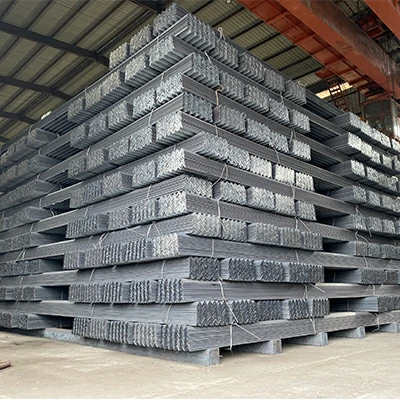Angle steel bars are tested for resistance to pressure and temperature using various methods to ensure their suitability for specific applications.
Here’s how these tests are typically conducted:
- Pressure Testing: Angle steel bars may undergo pressure testing to evaluate their resistance to compression or bending under load. This testing is often performed using hydraulic or mechanical testing machines capable of applying controlled forces to the angle bars. The angle bar is subjected to gradually increasing pressure until it reaches the desired test limit or failure point. The results are recorded, and the performance characteristics, such as yield strength, ultimate tensile strength, and deformation behavior, are analyzed.
- Tensile Testing: Tensile testing is conducted to assess the strength and ductility of angle steel bars under tension. Test specimens are prepared from the angle bars according to standardized procedures, and they are subjected to tensile forces using a universal testing machine. The tensile test measures parameters such as yield strength, ultimate tensile strength, elongation, and reduction in area. These properties provide valuable information about the material’s response to applied loads and its ability to withstand tensile stresses.
- Impact Testing: Impact testing evaluates the toughness and resistance of angle steel bars to sudden loading or dynamic forces. Test specimens are subjected to impact forces using instruments such as Charpy or Izod impact testers. China Angle bar suppliers The impact energy absorbed by the specimen during fracture is measured, providing insight into its behavior under dynamic loading conditions. This test is particularly important for applications where angle steel bars may be subjected to impact or shock loading, such as structural supports or machinery components.
- Temperature Testing: Angle steel bars may be tested for their performance at elevated or low temperatures to assess their behavior under thermal loading conditions. This testing can be conducted using environmental chambers or ovens to control the temperature of the specimens. Various mechanical tests, such as tensile testing or impact testing, may be performed at different temperature levels to evaluate the material’s strength, ductility, and toughness under thermal stress.
- Non-Destructive Testing (NDT): Non-destructive testing techniques, such as ultrasonic testing (UT), magnetic particle testing (MT), or dye penetrant testing (PT), may also be used to assess the integrity and quality of angle steel bars without causing damage to the specimens. These methods can detect surface defects, discontinuities, or internal flaws that may affect the structural performance of the angle bars.
By conducting these tests, manufacturers can ensure that angle steel bars meet specified requirements for pressure resistance, temperature resistance, and mechanical properties, providing confidence in their performance and reliability for various structural and construction applications.
